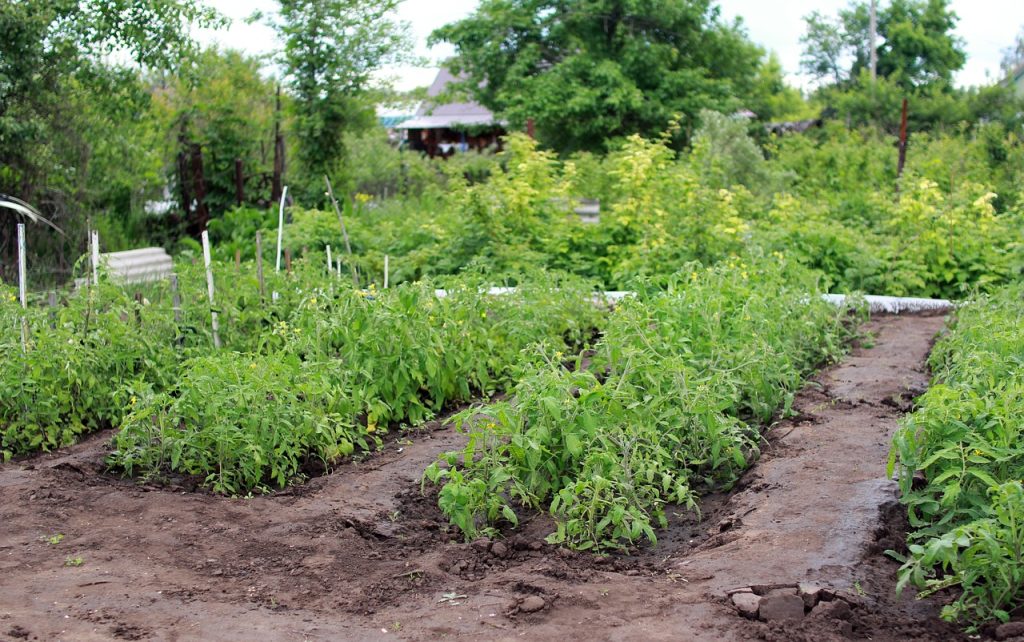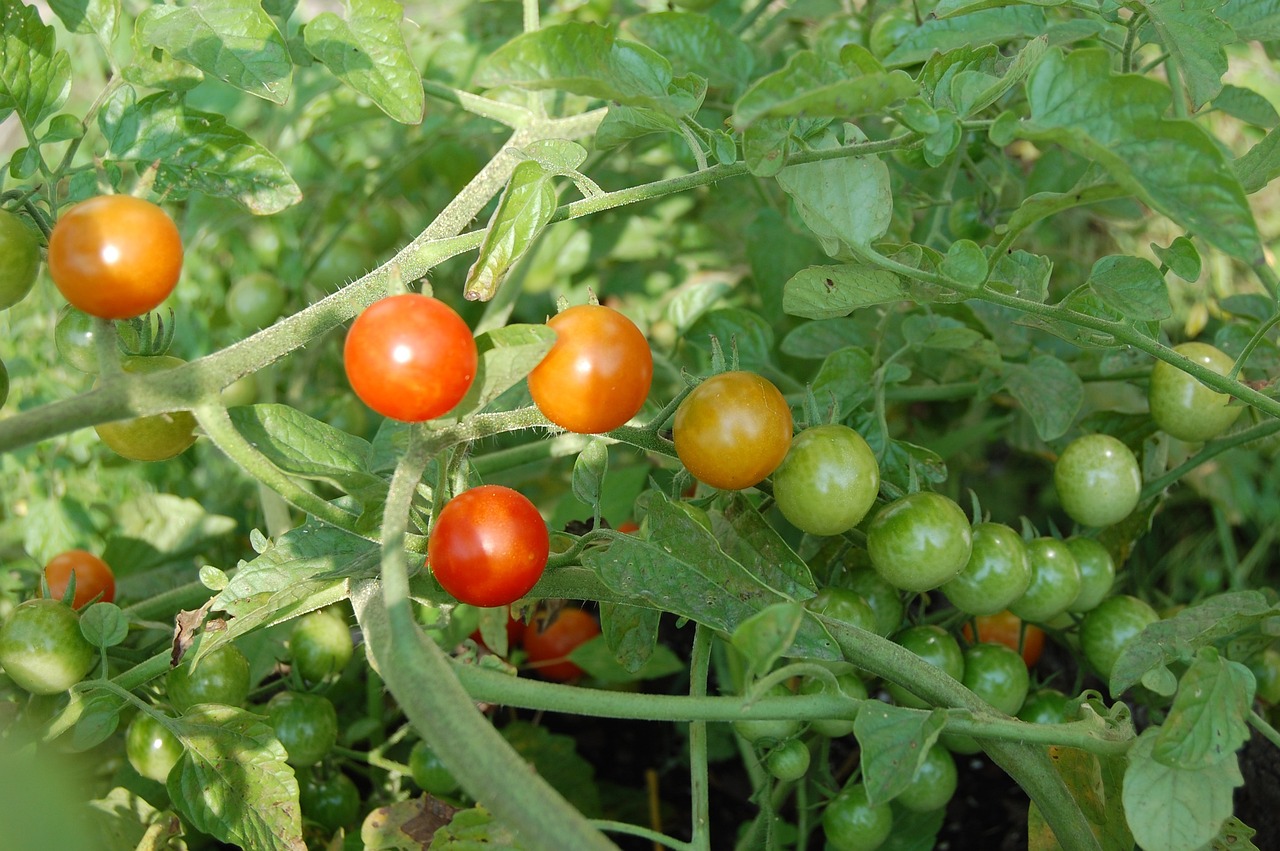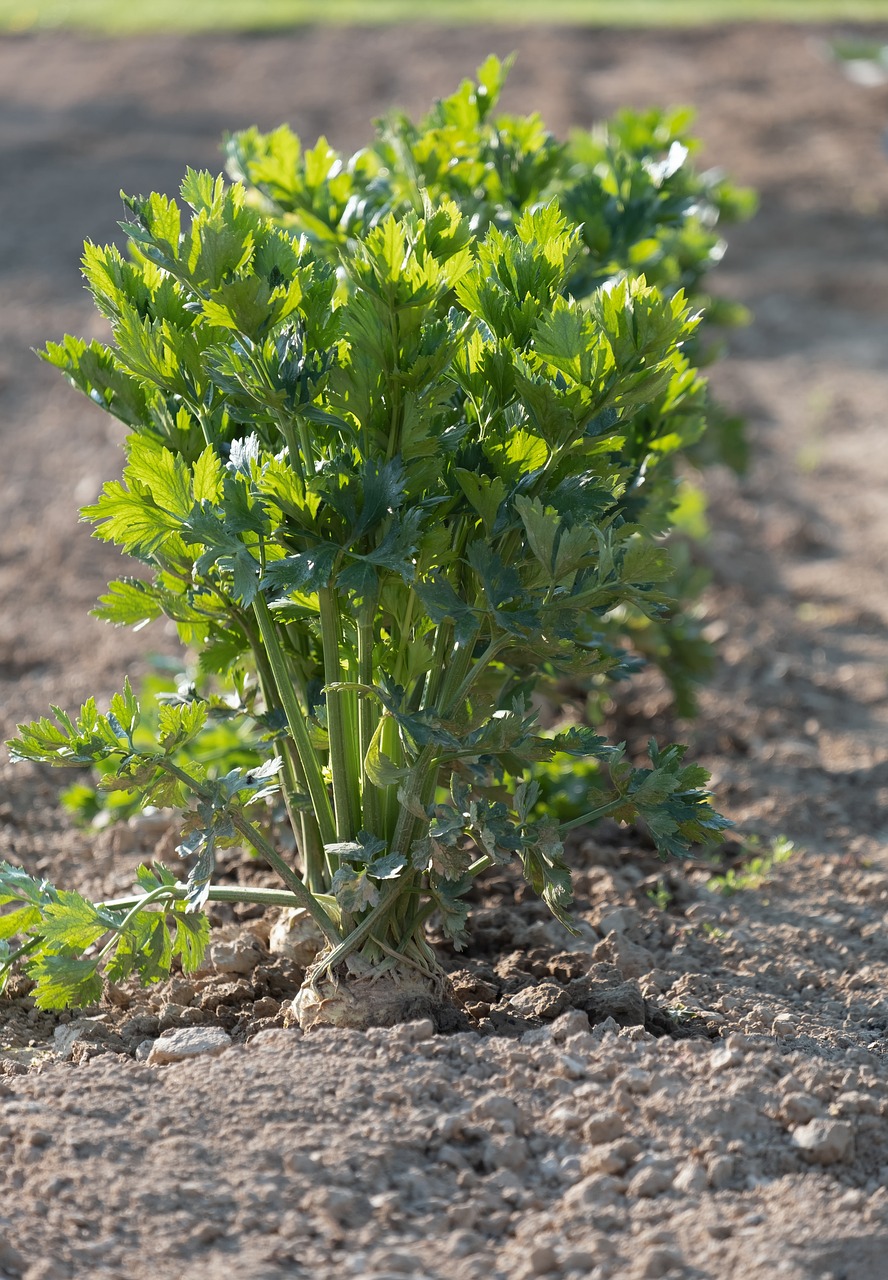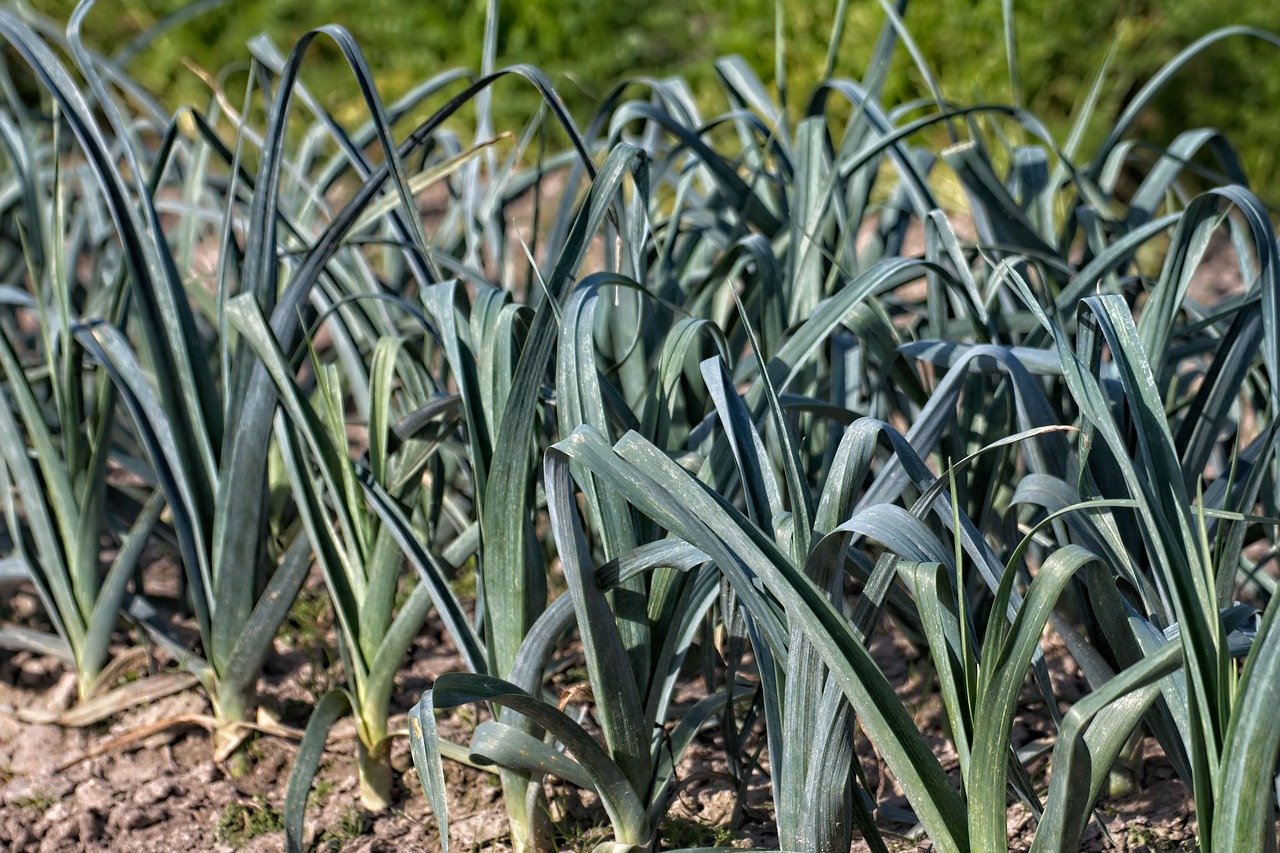While tomatoes can be relatively easy plants to grow, challenges such as pests, diseases, and environmental conditions can affect success. With proper planning, preparation, and ongoing care, gardeners can enjoy a rewarding harvest of fresh, flavorful tomatoes throughout the growing season.
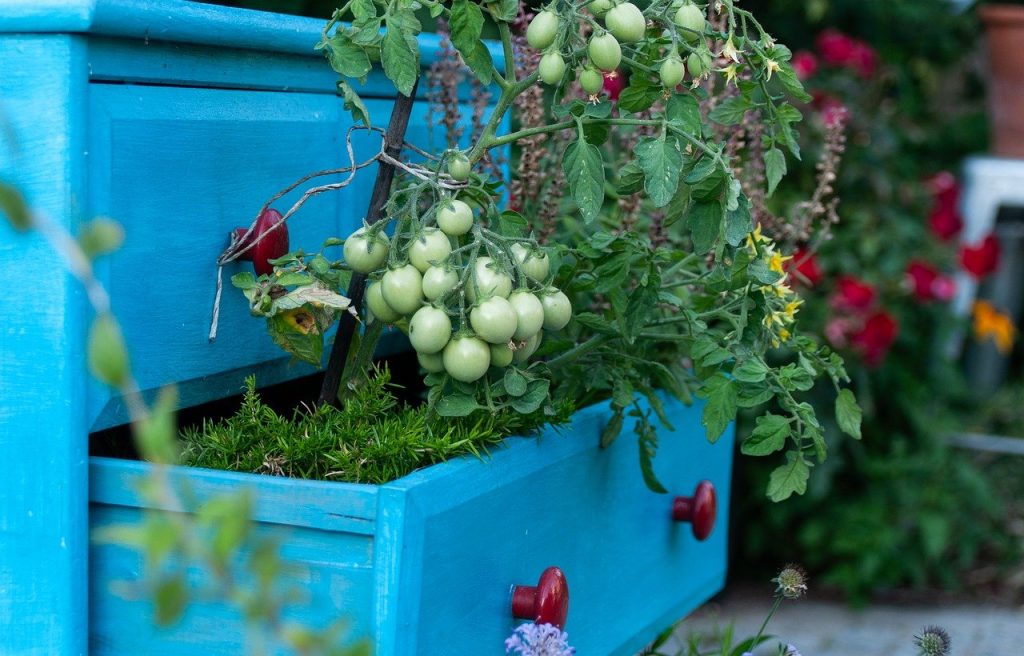
Description
Tomatoes (Solanum lycopersicum) are versatile, annual plants commonly used as vegetables, belonging to the family Solanaceae and are native to South America.
They are grown for their flavorful fruits which are used in various cooking operations. Tomato plants are typically categorized as determinate (bush type) or indeterminate (vining type). Determinate varieties grow to a fixed mature size and produce all their fruit within a short period, whereas indeterminate varieties continue to grow and produce fruit throughout the growing season.
Tomatoes vary in size, shape, and color. Commonly, they are red, but they can also be yellow, green, orange, pink, purple, brown, or even striped. They can be round, oblong, pear-shaped, or cherry-sized. Sizes vary from small cherry tomatoes (around 1-2 cm in diameter) to large beefsteak tomatoes (up to 10 cm or more in diameter).
Tomatoes are low in calories but rich in vitamins A and C, potassium, and folate. They also contain antioxidants, particularly lycopene, which is linked to various health benefits.
| Botanical name: Solanum lycopersicum | Propagation: Seeds, cuttings |
| Common name: Tomato | Soil type: Loamy, Sandy loam |
| Family: Solanaceae | Soil pH: 6.0-6.8 |
| Plant type: Annual | Temperature: 70-85°F |
| Hardiness zones: USDA zones 5-8 | Light: Full sun |
| Mature size: 2-4ft. tall, 2-3ft. | Spacing: 18-36 inches |
| Flower color: Yellow | Pollination: Insects |
| Time to harvest: 100-160 days | Toxicity: Nontoxic |
| Native area: South America |
Temperature requirements
Tomatoes prefer to grow in warm temperature conditions for optimal growth and fruit production. The ideal temperature range for growing tomatoes is 70-85°F (21-29°C).
Tomatoes are highly sensitive to frost, and exposure to temperatures below 32°F (0°C) can kill the plants. Prolonged exposure to temperatures below 50°F (10°C) can lead to chilling injury, affecting plant growth and fruit quality.
Soil requirements
Tomatoes prefer to grow in well drained loamy or sandy loam soils with pH range of 6.0-6.8. Tomato plants are heavy feeders and require nutrient-rich soil. Incorporate organic matter such as compost or well-rotted manure into the soil before planting to improve fertility and soil structure. A balanced fertilizer with equal parts nitrogen, phosphorus, and potassium (such as 10-10-10) can be used, but tomatoes benefit from higher phosphorus (P) and potassium (K) levels for root development and fruit production. Avoid excessive nitrogen as it can lead to lush foliage growth at the expense of fruit production.
Light/Sun requirements
Tomatoes grow well in full sun, therefore should receive at least 6-8 hours of direct sunlight each day. Choose a spot in your garden that is not shaded by trees, buildings, or other structures. If you are growing tomatoes indoors or on a balcony, make sure they are placed near a south-facing window or use grow lights to supplement natural sunlight.
When to Plant Tomatoes
In cooler climates, start seeds indoors and transplant them into the garden when all danger of frost has passed, and the soil has warmed enough to at least 60°F (16°C).
In tropical and subtropical regions, tomatoes can often be grown year-round, but it’s best to plant them at the beginning of the rainy season so that they can benefit from the rains.
Soil preparation
Before planting, prepare the soil by removing weeds, rocks, and debris. Till or spade the soil to a depth of 8-12 inches (20-30 cm) to loosen it and improve root penetration. Test the soil for nutrient content and amend it based on test results to provide adequate nutrients for tomato plants.
Incorporate compost or well-rotted manure into the soil to improve fertility and structure. Aim for about 2-3 inches of organic matter worked into the top 6-8 inches of soil.
Planting
Tomatoes can be planted by starting seeds indoors or by direct seeding in the garden bed.
Starting Seeds Indoors
Start seeds indoors 6-8 weeks before the last expected frost date.
Sow seeds in seed trays or small pots filled with seed-starting mix.
Keep the soil moist and place the trays in a warm location with plenty of light.
Transplant seedlings outdoors after the last frost when they are 6-8 inches tall and have at least two sets of true leaves.
Planting Seedlings Outdoors
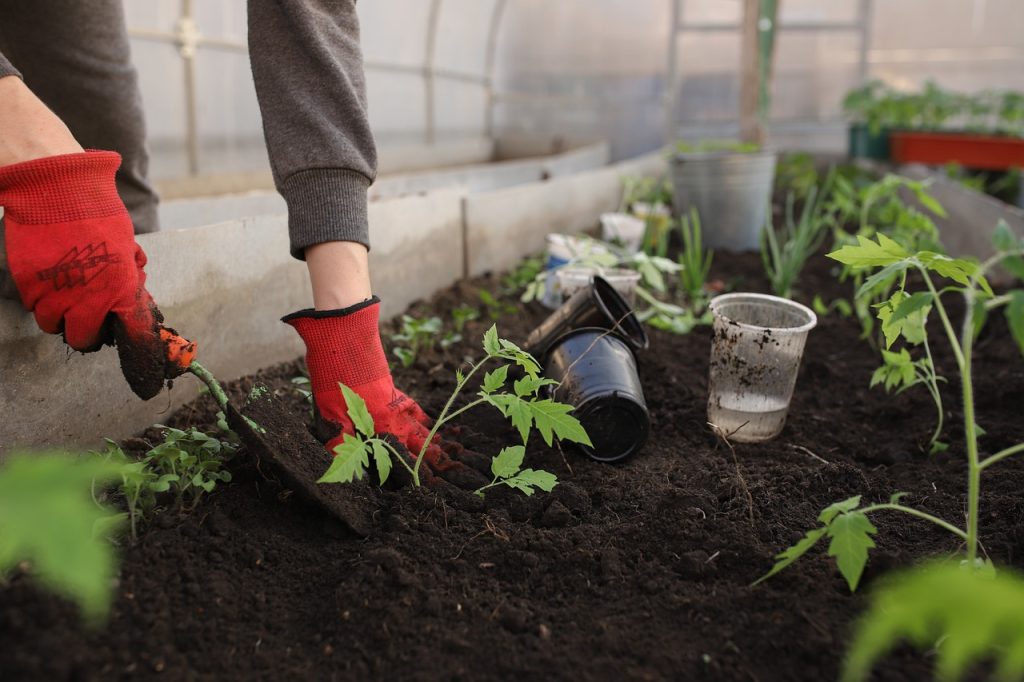
Wait until the soil temperature reaches at least 60°F (15.5°C) and the danger of frost has passed.
Dig holes deep enough to accommodate the root ball and part of the stem. Bury the stem up to the first set of leaves. Roots will form along the buried stem, leading to a strong root system.
Space plants 18-24 inches apart for determinate varieties and 24-36 inches apart for indeterminate varieties.
Plant seedlings deep enough so that the first set of leaves is just above the soil surface. This encourages strong root development.
Water thoroughly after planting to settle the soil around the roots.
How to Care for Tomato Plants
Mulching: Apply mulch around the plants to retain soil moisture, regulate temperature, and reduce weed growth. Use organic mulches like straw, grass clippings, or compost. Apply a 2–3-inch layer around the base of the plants, keeping it away from the stem to prevent rot.
Staking and Supporting: Use stakes, cages, or trellises to support the plants as they grow, especially for indeterminate varieties.
Weeding: Keep the area around your tomato plants weed-free to reduce competition for nutrients and water. Hand weed or use a hoe, being careful not to disturb the roots of the tomato plants.
Watering: Water consistently, aiming for deep, infrequent watering to encourage strong root growth. Avoid wetting the foliage to prevent fungal diseases. Aim for 1-2 inches of water per week, adjusting based on weather conditions. Water at the base of the plant to keep the foliage dry, reducing the risk of fungal diseases.
Fertilizing: Feed plants with a balanced fertilizer or one high in phosphorus to promote fruiting. Use a fertilizer high in phosphorus (middle number in N-P-K ratio) to promote flowering and fruiting. Avoid excessive nitrogen, which promotes leafy growth at the expense of fruit production.
Pruning and Supporting: Remove suckers (the shoots that grow between the main stem and branches) to encourage better air circulation and fruit production, especially in indeterminate varieties.
Use stakes, cages, or trellises to support plants and keep them upright. Tie the plants to supports with soft ties or garden twine, being careful not to damage the stems.
Harvesting Tomatoes
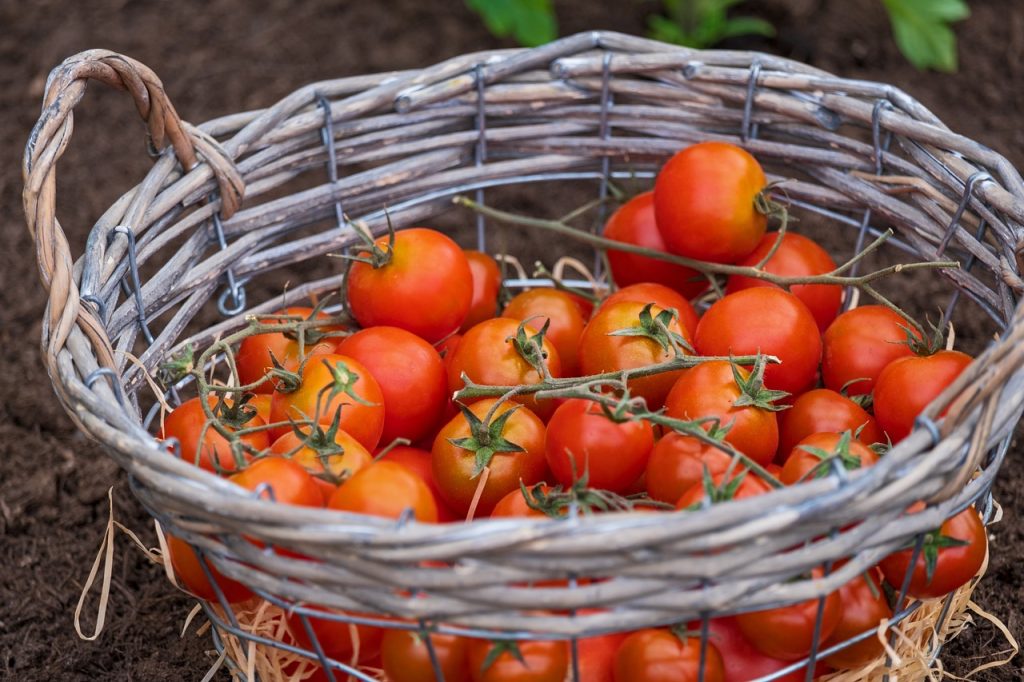
Tomatoes are ready to harvest when they are fully colored based on their variety (red, yellow, orange, etc.).
Gently twist and pull the fruit from the vine or use pruning shears. Check your plants every few days during peak season to pick ripe tomatoes and encourage continued production.
Storage
In case you have harvested green tomatoes, place them in a warm, dry spot indoors to ripen. You can place them in a paper bag or a cardboard box to speed up the process.
You can also add a banana or apple to the container. These fruits emit ethylene gas, which promotes ripening. Mature fruits under storage typically take 3-5 days to ripen.
If you do not intend to consume ripe tomatoes within a few days, refrigerate them to extend their shelf life. Before eating, bring refrigerated tomatoes back to room temperature to improve their taste and texture.
Best Companion plants to grow with Tomatoes
Basil, marigolds, garlic, onions, chives, lettuce and spinach.
Worst Companion plants
Fennel, dill, potatoes, brassicas, eggplants and peppers.
Common Pests and Diseases
Pests: Look for aphids, tomato hornworms, whiteflies, and spider mites. Use appropriate pest control methods such as insecticidal soap, neem oil, or handpicking.
Diseases: Watch for signs of blight, powdery mildew, and other fungal diseases. Practice crop rotation, use disease-resistant varieties, and apply fungicides in case of an infestation.
